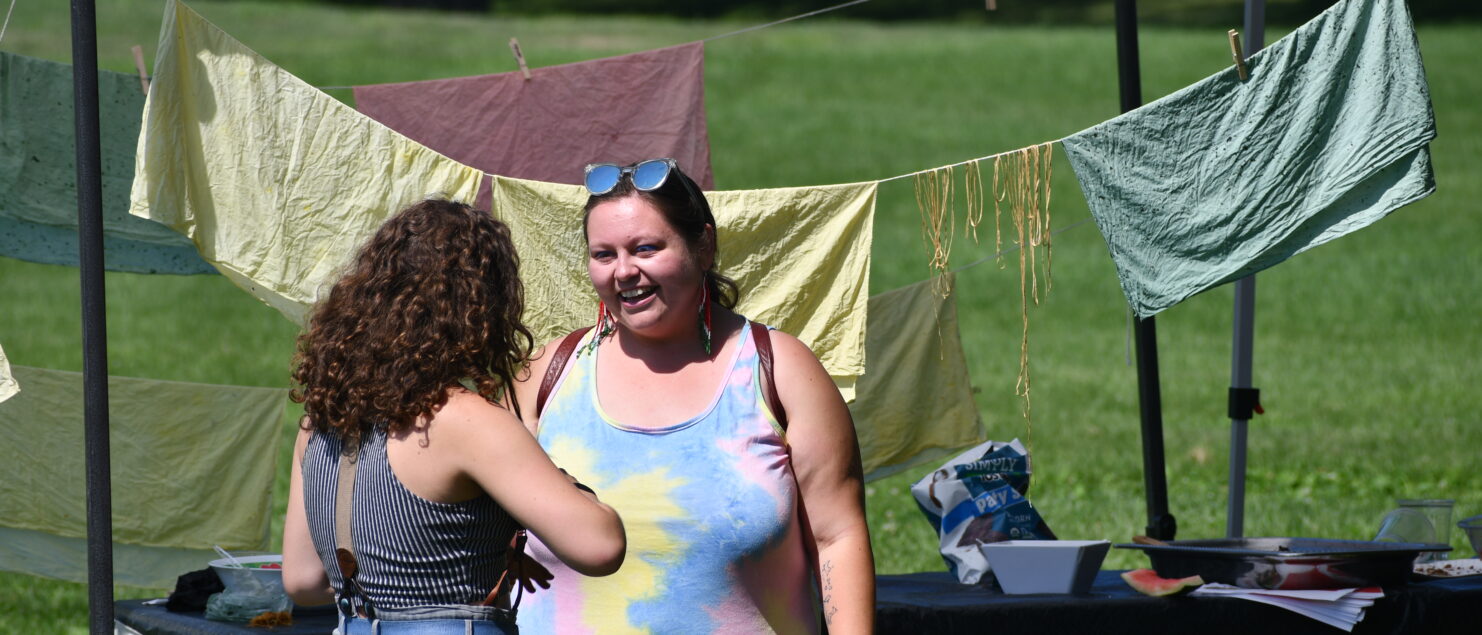Reconnecting Our Tyes to Dyes – Indigenous Reclamation
On Friday, July 28th, the Bard Farm, Bard Studio Arts, Lucy Grignon (Stockbridge-Munsee/Menominee), and Rethinking Place: Bard-on-Mahicantuck joined together in the heat in a collective exploration of natural color.
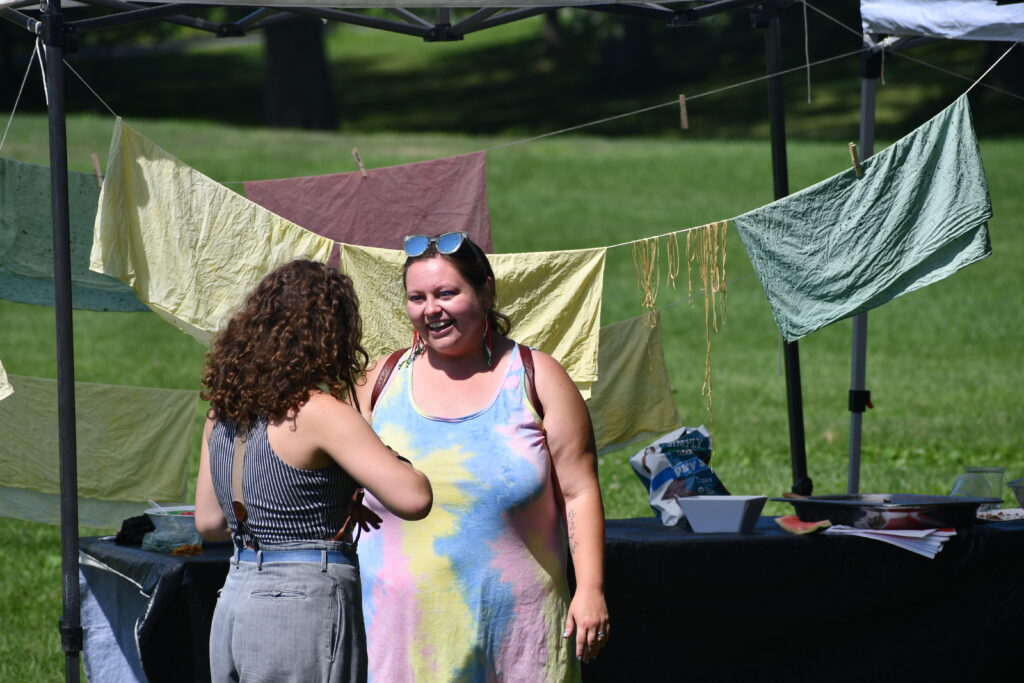
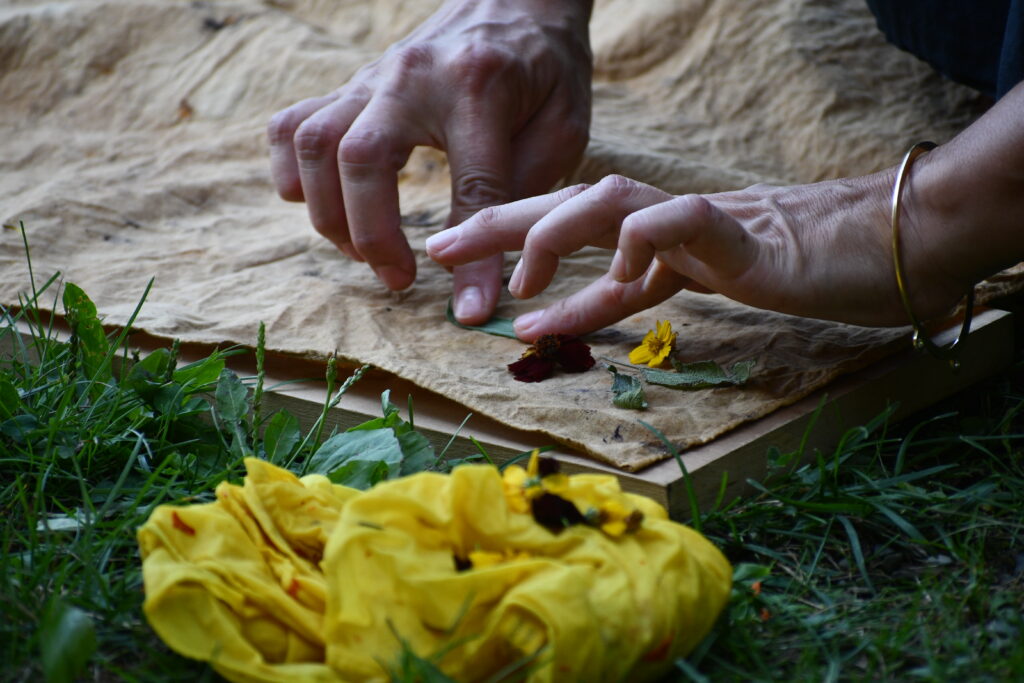
The barn was filled with hot plates heating water with various plant materials, including dyer’s coreopsis, dyer’s chamomile, weld, marigold, and sage. All plants were harvested the day before, mostly grown in the Bard Farm or community garden, while a couple – including black walnut and Queen Anne’s Lace – were foraged from the nearby roadside and Leila’s backyard. In the center of the room, participants massaged indigo into prepared fabric with salt, slowly turning cotton bandanas (and their hands) a dark teal.
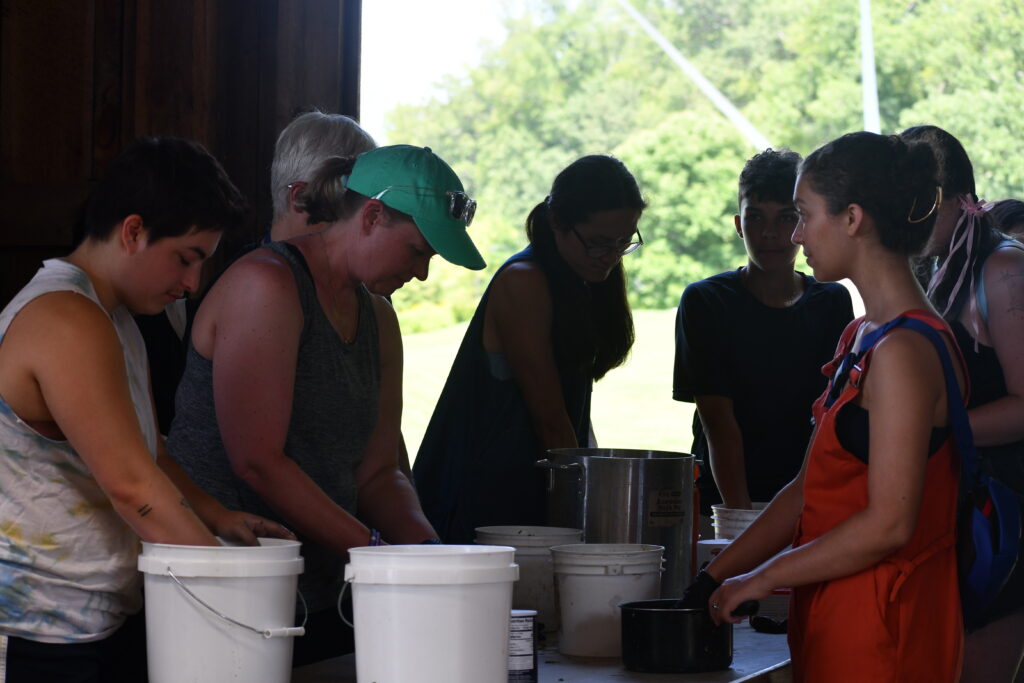

Lucille Grignon, a homesteader and traditional educator at Ancient Roots Homestead, shared stories of her research in museums, with her community and on her homestead, including stories of braiding Lenape Blue Corn with friends and the meaning of the Stockbridge-Munsee Many Trails Symbol portrayed on a box below.
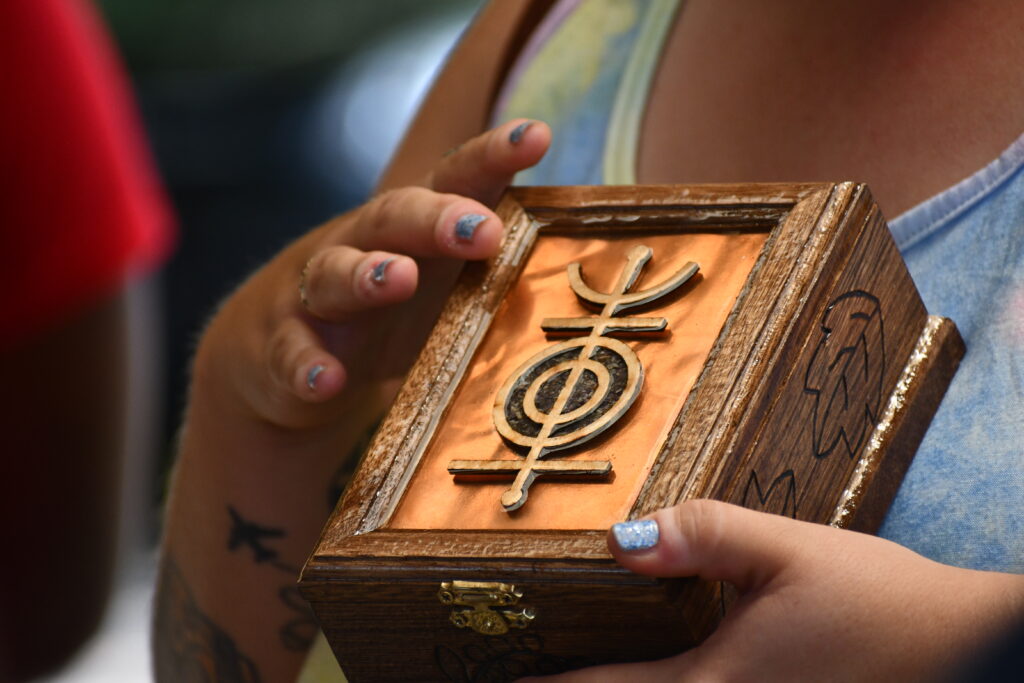
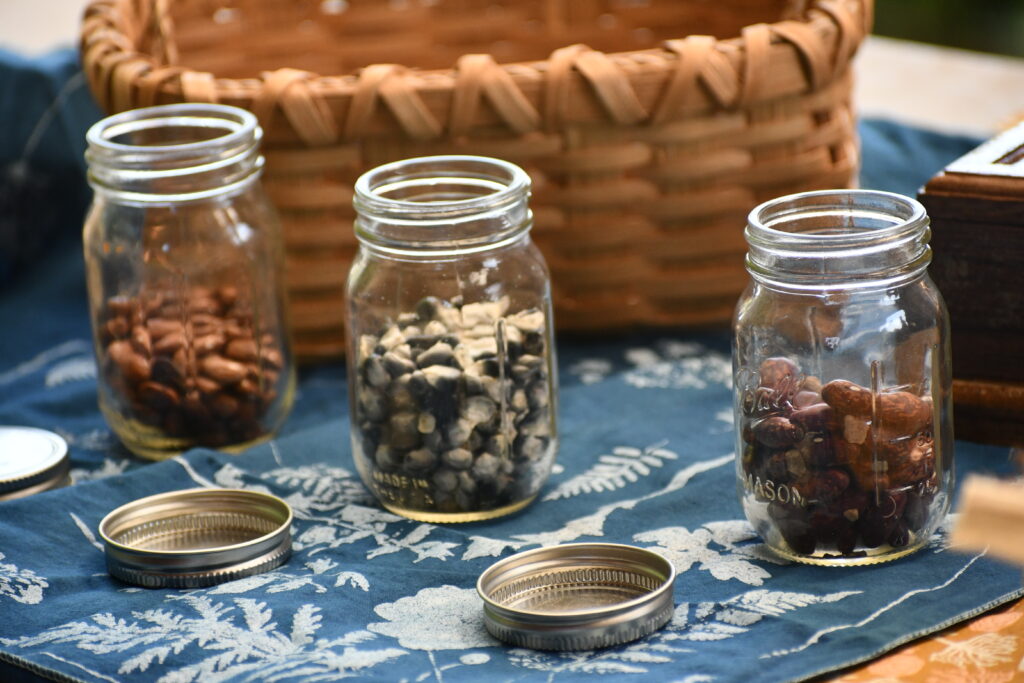
As participants began to experiment with tying bandanas, pounding flowers in fabrics, and soaking in colors, visible joy spread throughout the barn.
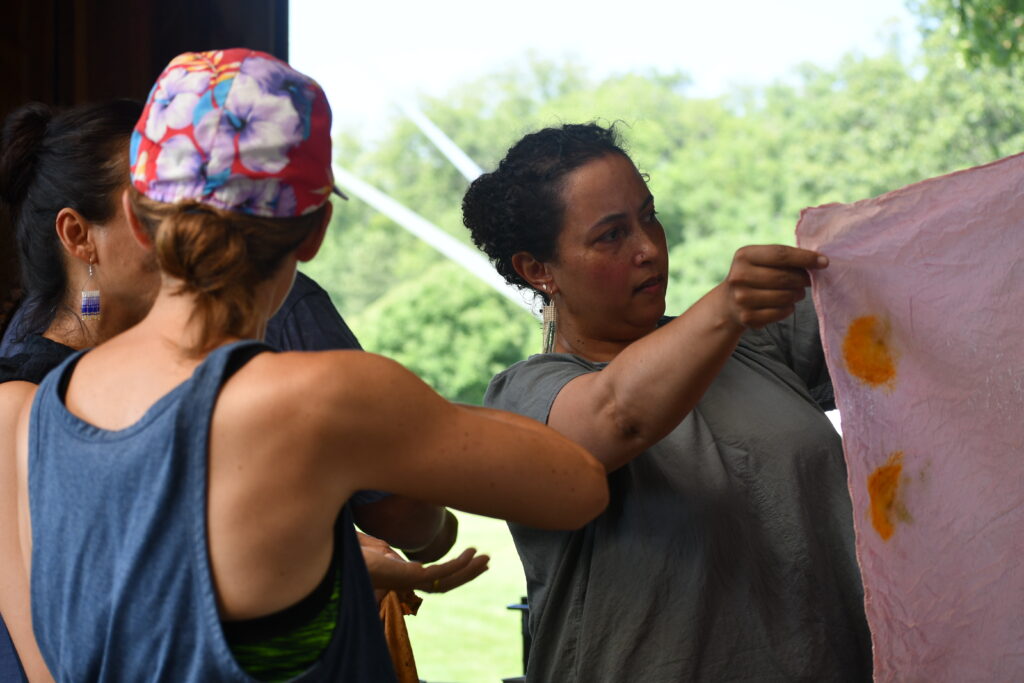
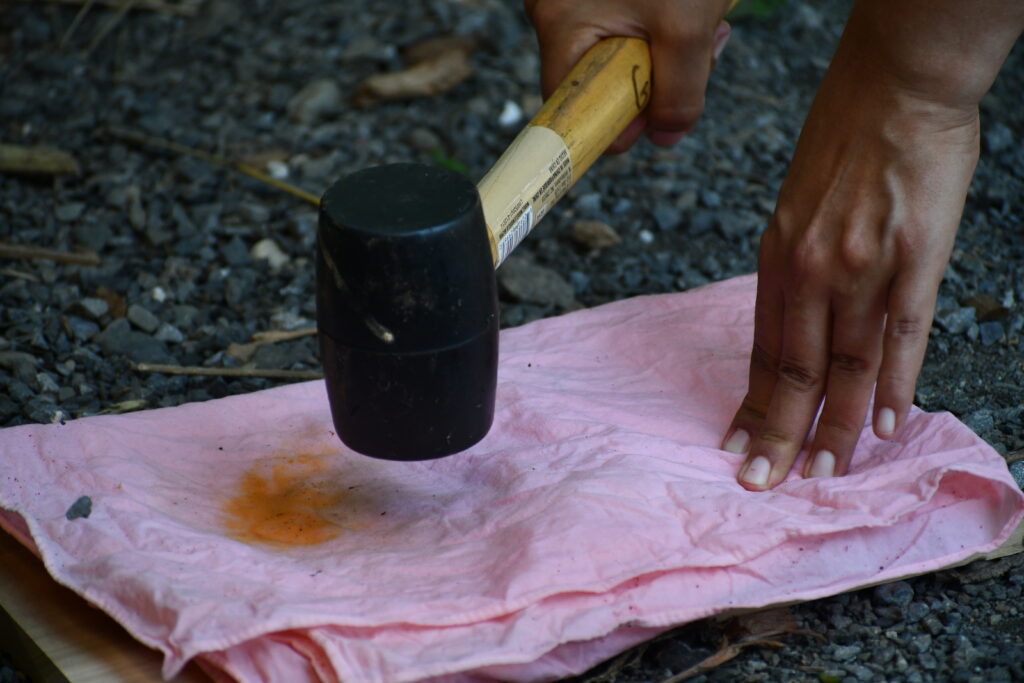
Towards the end of the workshop, Rebecca took out large jars of weld and dyer’s coreopsis seeds she has been saving, quickly winnowing them through a screen before putting them in bags to share.
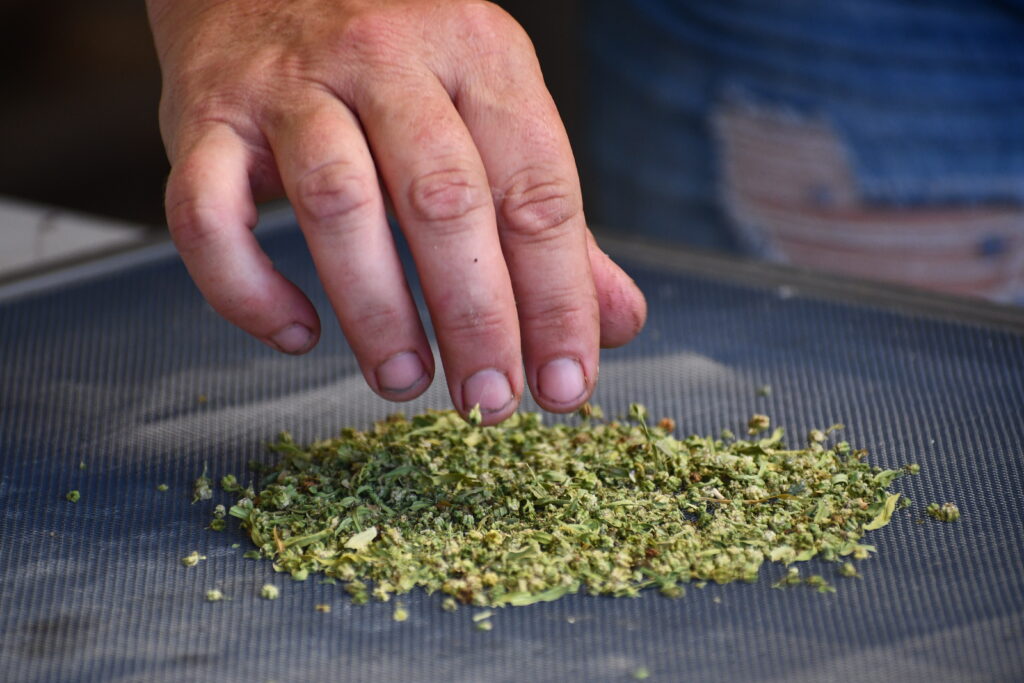
Find basic steps for preparing dye baths and fabrics here.
Special thanks to Rebecca Yoshino, Bard Farm, Beka Goedde, Bard Studio Arts, Lucy Grignon, Ancient Roots Homestead, and students Blossom Bogon-Froese and Leila Stallone.
Project funding provided as a collaborative research grant through Rethinking Place: Bard-on-Mahicantuck, a Mellon Foundation Humanities for all Times Initiative.
All photos with gratitude to Aya Rebai.
